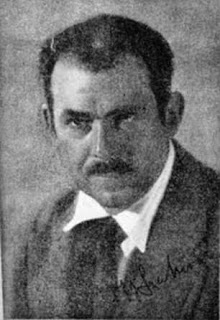Instead of utilizing a microscope or a serious grounding in the physical sciences, William Seabrook pursued the supernatural in the only way he knew how—as a journalist. Born in Westminster, Maryland, to a former lawyer who became a Lutheran minister, Seabrook claimed that his thirst for the supernatural was inspired by his grandmother, Piny—an opium addict, child of nature, and witch. In all likelihood, Seabrook’s stories concerning his childhood were highly embellished, though something certainly sparked a curiosity in the young boy.
After living a lifetime in just a few years (as a high-ranking member of an ad agency, a member of the French Army’s American Field Service during World War I, and a reporter for the New York Times), Seabrook finally landed on an idea that would make his name synonymous with occult-tinged adventure during his lifetime. After meeting a visiting Lebanese student at Columbia University, Seabrook accepted an offer to travel to the Middle East. Collected together as Adventures in Arabia: Among the Bedouins, Druses, Whirling Dervishes, and Yezidee Devil Worshippers, Seabrook’s foray into the Muslim world is most famous today for his statement that the Kurdish Yazidi minority oversees a chain of seven towers dedicated to “broadcasting occult vibrations” in the service of evil. Seabrook’s next work is his most famous.
The Magic Island, an in-depth depiction of Haitian life under the oversight of American Marines, is commonly (and erroneously) known as the book that introduced the word “zombie” into the English lexicon. The Magic Island placed Seabrook as an unlikely initiate into the world of Haitian voodoo. While there, he witnessed previously unrecorded rituals and heard stories concerning undead workers and their aversion to salt.
At one point, Seabrook claimed to have seen a real zombie, although he never described it as having any overt supernatural powers. The Magic Island directly inspired the 1932 film White Zombie, which is often considered to be the first zombie movie.After the success of The Magic Island, Seabrook continued to write strange travelogues that took their readers to the fringes of society. In Jungle Ways, Seabrook graphically details what it’s like to eat human flesh, while Asylum is a highly personal account of Seabrook’s struggles with alcoholism while voluntarily confined to a mental hospital. In 1940, Seabrook published Witchcraft: Its Power in the World Today, a critical study of the supernatural that ultimately concludes that science can explain away most occult phenomena. Still, such conclusions did not stop Seabrook from personally experimenting with extrasensory perception or from partaking in black magic rituals designed to curse Adolf Hitler.
listverse.com
After living a lifetime in just a few years (as a high-ranking member of an ad agency, a member of the French Army’s American Field Service during World War I, and a reporter for the New York Times), Seabrook finally landed on an idea that would make his name synonymous with occult-tinged adventure during his lifetime. After meeting a visiting Lebanese student at Columbia University, Seabrook accepted an offer to travel to the Middle East. Collected together as Adventures in Arabia: Among the Bedouins, Druses, Whirling Dervishes, and Yezidee Devil Worshippers, Seabrook’s foray into the Muslim world is most famous today for his statement that the Kurdish Yazidi minority oversees a chain of seven towers dedicated to “broadcasting occult vibrations” in the service of evil. Seabrook’s next work is his most famous.
The Magic Island, an in-depth depiction of Haitian life under the oversight of American Marines, is commonly (and erroneously) known as the book that introduced the word “zombie” into the English lexicon. The Magic Island placed Seabrook as an unlikely initiate into the world of Haitian voodoo. While there, he witnessed previously unrecorded rituals and heard stories concerning undead workers and their aversion to salt.
At one point, Seabrook claimed to have seen a real zombie, although he never described it as having any overt supernatural powers. The Magic Island directly inspired the 1932 film White Zombie, which is often considered to be the first zombie movie.After the success of The Magic Island, Seabrook continued to write strange travelogues that took their readers to the fringes of society. In Jungle Ways, Seabrook graphically details what it’s like to eat human flesh, while Asylum is a highly personal account of Seabrook’s struggles with alcoholism while voluntarily confined to a mental hospital. In 1940, Seabrook published Witchcraft: Its Power in the World Today, a critical study of the supernatural that ultimately concludes that science can explain away most occult phenomena. Still, such conclusions did not stop Seabrook from personally experimenting with extrasensory perception or from partaking in black magic rituals designed to curse Adolf Hitler.
listverse.com

Σχόλια
Δημοσίευση σχολίου